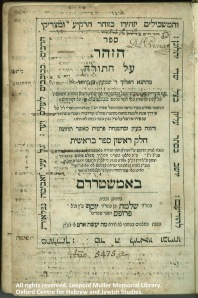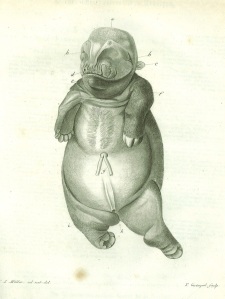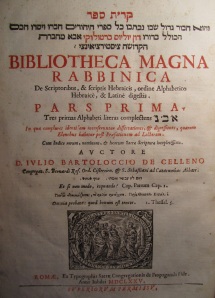
The highlight of the week is a two-volume 5475 (1714 or 1715) Amsterdam edition of Sefer ha-Zohar, pre-owned and signed by D. L. Pereira (David Haim Pereira). Notice the date in the chronogram converted and transcribed by hand “Año 5475”, very likely the same that signed the title page. The book is heavily annotated. Below is an image of the title page verso containing notes on festivals. Marginal notes are interspersed throughout the rest of both volumes.

The books are part of Sir Moses Montefiore’s library, previously held at Ramsgate in Kent and Jews’ College in London, now with us as part of the Foyle-Montefiore Collection acquired in 2006. Both volumes were rebound at some point in the 19th century, and their front boards adorned with an oval gold-stamp decoration of Yeshivat Ohel Mosheh ve-Yehudit Ramsget. It is not clear how this early 18th century edition of Zohar found its way into the library of Sir Moses Montefiore.
The previous owner of Sefer ha-Zohar, D. L. Pereira, David Lopez Pereira, otherwise known as David Haim Pereira, spent the later years of his life in Saint Mary Whitechapel, Middlesex. If identified correctly, he was the son of Manuel (known also as Isaac) Lopes Pereira and a grandson of David Lopes Pereira (Duarte Lopes Pereira) of Almendra, Portugal. The history of the Pereira family is fascinating. In 1629, D. L.’s grandmother Francisca was prosecuted by the Spanish Inquisition at Avila, and survived the ordeal. The family then subsequently moved several times to and within Holland (Rouen, Antwerp, Middleburg), lived at some point also in Bordeaux, France. In 1655, they arrived in London, where Manuel (Isaac) Lopes Pereira has become a treasurer and then also a warden of the London Congregation, gradually acquiring stock in sea trade companies and local banks. D. L. Pereira, it seems, inherited parts if not all of this, and is mentioned in Farber as one of the Jewish investors in the Royal African Company (engaged in transatlantic slave trade), and the Bank of England, 1702-12.[1] To some, it might be of interest to know that his Will (17 March 1756) is held at the National Archives in Kew, and available for download at a small fee.
[1] Eli Farber’s Jews, Slaves, and the Slave Trade: Setting the Record Straight (NYU Press, 1998), p. . On the Jewish involvement in transatlantic slave trade focusing on the British empire.








